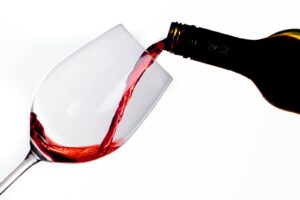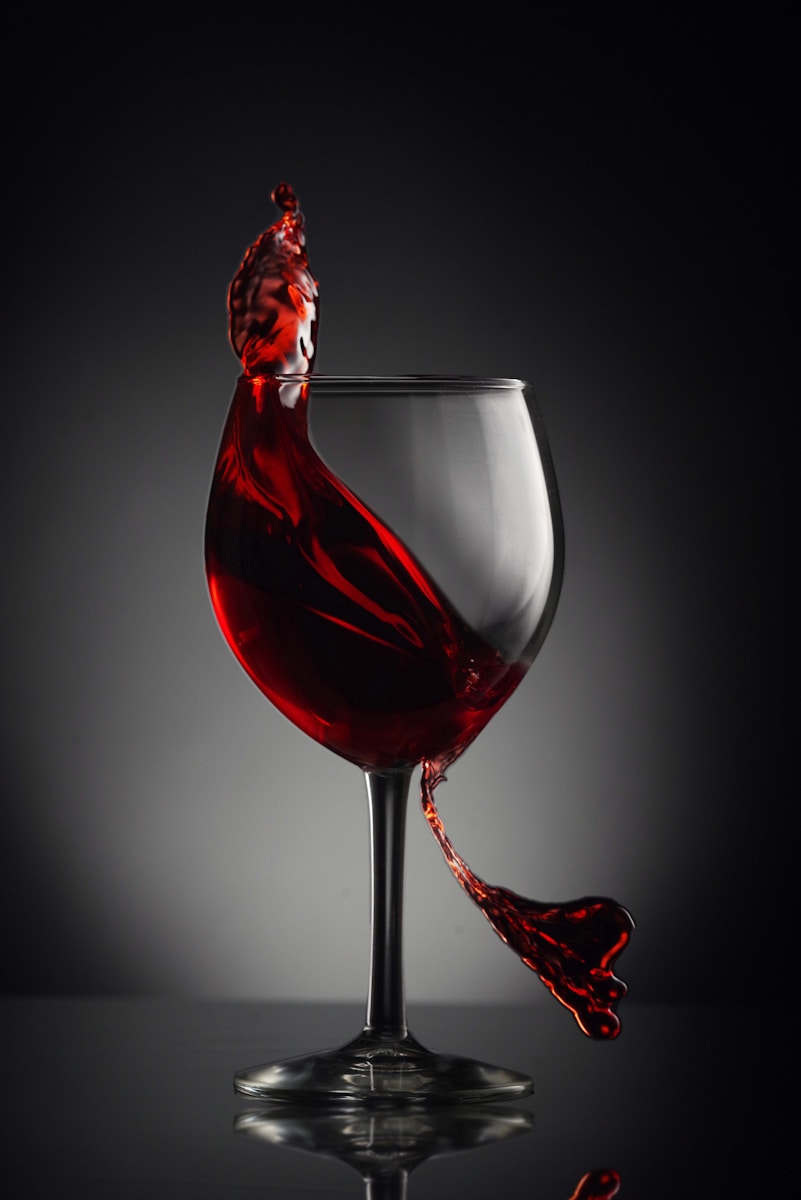Characteristics to Look for in a Top Red Wine
Key Characteristics to Consider when Choosing a Red Wine
When it comes to selecting a top-quality red wine, there are several key characteristics to consider. These qualities not only contribute to the overall enjoyment of the wine but also indicate the level of craftsmanship and the potential for a truly exceptional drinking experience. Whether you are entertaining guests or simply indulging in a glass at home, here are the top 10 characteristics to look for in a red wine.
1. Color: One of the first things to observe is the color of the red wine. The hue can vary from deep purple to ruby red or even brick red. While color alone does not determine the quality of the wine, it can offer insight into the grape variety and level of aging.
2. Aroma: Bring the glass to your nose and inhale. A top red wine will have an enticing and complex aroma. Look for notes of fruit, such as berries or cherries, as well as earthy tones like tobacco or leather. The aroma should be pleasant and well-balanced.
3. Taste: Take a sip and let the flavor dance on your palate. A great red wine will exhibit depth and complexity. Look for a harmonious balance between sweetness, acidity, and tannins. Opt for a wine that offers a range of flavors, such as blackberries, currants, or spices, with a lingering and satisfying finish.
4. Body: Red wines can range from light-bodied to full-bodied. The body refers to the weight and texture of the wine in your mouth. Lighter-bodied reds are refreshing and often pair well with lighter fare, while full-bodied wines are richer and more intense, making them ideal for heartier dishes.
5. Tannins: Tannins are compounds found in the skins, seeds, and stems of grapes. They contribute to the structure and mouthfeel of the wine. A top red wine will have well-integrated and balanced tannins. They should be present but not overwhelming, providing a pleasant astringency that enhances the overall taste.
6. Complexity: The best red wines often exhibit layers of flavors and aromas. Complexity refers to the depth and intricacy of these elements. A wine with complexity will evolve as you drink it, revealing new nuances and subtleties with each sip. Look for wines that keep you engaged and intrigued throughout the drinking experience.
7. Ageability: While not all red wines are meant to be aged, a top-quality red wine should have the potential to improve and develop over time. It should have the structure and balance to withstand the test of time. However, keep in mind that not all wines benefit from aging, so it’s important to do your research and know the ideal drinking window for each wine.
8. Balance: Balance is a key characteristic to look for in any well-crafted red wine. The various elements of the wine, including acidity, sweetness, tannins, and alcohol, should be in harmony, with none overpowering the others. A balanced wine will be enjoyable to drink and showcase the winemaker’s skill.
9. Finish: The finish refers to the lingering taste after swallowing the wine. A top red wine will have a long and satisfying finish. The flavors should gracefully fade away, leaving you with a pleasant memory of the wine. Avoid wines with a short or unpleasant finish.
10. Quality: Last but certainly not least, always consider the overall quality of the wine. Look for reputable producers known for their commitment to excellence. Read reviews, consult wine experts, and consider the wine’s provenance. Investing in a top-quality red wine ensures a more satisfying and memorable drinking experience.
When selecting a top red wine, consider the color, aroma, taste, body, tannins, complexity, ageability, balance, finish, and overall quality. By paying attention to these key characteristics, you will increase your chances of finding a red wine that truly delights your senses and enhances your enjoyment of this timeless beverage. Cheers!
Understanding the Different Types of Red Wine
When it comes to red wine, there is a plethora of options available, each with its own distinct characteristics and flavors. Understanding the different types of red wine can be a daunting task, especially for beginners. In this article, we will explore the top 10 best red wines and provide insight into their unique qualities.
- Cabernet Sauvignon: Known for its full-bodied nature and intense flavors, Cabernet Sauvignon is often hailed as the king of red wines. It boasts rich black fruit flavors, strong tannins, and a long-lasting finish. This wine pairs well with red meats and aged cheeses.
- Merlot: With its velvety texture and soft tannins, Merlot is an approachable and versatile red wine. It exhibits flavors of cherry, plum, and chocolate, making it an excellent choice for pairing with roasted poultry, pork, or pasta dishes.
- Pinot Noir: Considered one of the most challenging grapes to grow, Pinot Noir produces light to medium-bodied wines with delicate flavors of red berries, black cherries, and earthy undertones. This wine pairs well with grilled salmon, roasted vegetables, and lighter meats.
- Syrah/Shiraz: Syrah, also known as Shiraz in Australia, offers robust flavors of blackberry, black pepper, and spice. It is a bold and full-bodied wine that pairs beautifully with grilled meats, stews, and hearty dishes.
- Malbec: Originating from Argentina, Malbec has gained popularity for its deep purple color and intense flavors of dark fruits, plums, and cocoa. This wine pairs exceptionally well with grilled steak, barbecued ribs, and bold-flavored cheeses.
- Zinfandel: Zinfandel is known for its bold and fruity profile, often exhibiting flavors of blackberry, raspberry, and black pepper. It pairs splendidly with spicy cuisines, barbecue dishes, and aged cheddar cheeses.
- Sangiovese: A classic Italian red wine, Sangiovese showcases bright red cherry flavors, high acidity, and medium to full body. It pairs wonderfully with tomato-based dishes, pizza, and pasta with meat sauces.
- Tempranillo: This Spanish red wine offers flavors of cherry, plum, and leather, with a medium to full-bodied profile. It pairs well with grilled meats, cured ham, and hearty casseroles.
- Grenache: Grenache, also known as Garnacha, is popular for its fruity and spicy character. It exhibits flavors of red berries, cinnamon, and cloves. This wine complements Mediterranean cuisine, grilled vegetables, and tapas.
- Cabernet Franc: As the parent grape of Cabernet Sauvignon, Cabernet Franc showcases flavors of red fruits, bell pepper, and herbs. It pairs well with grilled or roasted meats, tomato-based sauces, and aged cheeses.

Understanding the different types of red wine can enhance your appreciation and enjoyment of this beloved beverage. From bold and full-bodied Cabernet Sauvignon to delicate and nuanced Pinot Noir, there is a red wine to suit every palate and occasion. Experimenting with different varieties and food pairings can further enrich your wine-tasting experiences. Cheers to exploring the world of red wine!
READ ALSO: Top 10 Best Cakes In The World
The World’s Most Renowned Red Wine Regions
When it comes to red wine, there are certain regions around the world that have gained a reputation for producing some of the finest varieties. These regions are known for their unique climate, soil composition, and winemaking traditions, which all contribute to the exceptional quality of their red wines. In this article, we will explore some of the top red wine regions that wine enthusiasts should be familiar with.
- Bordeaux, France: Bordeaux is often considered the epitome of red wine production. This renowned region in southwestern France is home to some of the most prestigious vineyards in the world. Bordeaux produces a wide range of red wine varieties, including Cabernet Sauvignon, Merlot, and Cabernet Franc. These wines are known for their complexity, elegance, and aging potential.
- Tuscany, Italy: Tuscany is another famous red wine region, most notably known for its iconic Sangiovese grape variety. The region’s flagship wine, Chianti, is made primarily from Sangiovese grapes and is characterized by its bright acidity, cherry flavors, and earthy undertones. Other notable Tuscan reds include Brunello di Montalcino and Vino Nobile di Montepulciano.
- Napa Valley, United States: Napa Valley, located in California, has gained international recognition for its world-class Cabernet Sauvignon wines. The warm climate, diverse soil types, and innovative winemaking techniques contribute to the production of bold, full-bodied red wines with rich flavors of black fruits, spices, and vanilla.
- Mendoza, Argentina: Mendoza is the heartland of Argentina’s wine industry and is renowned for its exceptional Malbec wines. The region’s high altitude, combined with the Andes Mountains’ cooling influences, creates ideal conditions for cultivating grapes with remarkable concentration and depth. Mendoza’s Malbecs often exhibit intense flavors of blackberry, plum, and chocolate.
- Rioja, Spain: Rioja is one of Spain’s most iconic wine-producing regions and is celebrated for its traditional red wine style. Tempranillo, the primary grape variety used in Rioja wines, yields wines with vibrant red fruit flavors, balanced acidity, and elegant tannins. Rioja wines undergo extended aging in oak barrels, adding complexity and finesse to the final product.
- Barossa Valley, Australia: Known for its bold and fruit-forward red wines, the Barossa Valley in South Australia produces some of the finest Shiraz wines in the world. These wines showcase intense flavors of blackberry, plum, and pepper, with a full-bodied palate and velvety tannins. Grenache and Cabernet Sauvignon are also popular red varieties in this region.
- Douro Valley, Portugal: The Douro Valley is Portugal’s most famous wine region, renowned for its production of Port wine. However, the region also produces exceptional red wines made from indigenous grape varieties such as Touriga Nacional, Touriga Franca, and Tinta Roriz. Douro reds are known for their rich, full-bodied structure and complex flavors.
- Piedmont, Italy: Piedmont is synonymous with prestigious red wines such as Barolo and Barbaresco. These wines are crafted from the Nebbiolo grape, which produces wines with high acidity, firm tannins, and flavors of red cherry, rose petals, and truffles. Piedmont’s red wines are known for their exceptional aging potential.
- Stellenbosch, South Africa: Stellenbosch is the heart of South Africa’s wine industry and is renowned for its exceptional red wines. The region is known for its Bordeaux-style blends, predominantly made from Cabernet Sauvignon, Merlot, and Cabernet Franc. Stellenbosch’s red wines are full-bodied, with ripe dark fruit flavors and elegant tannins.
- Rheingau, Germany: Although Germany is famed for its white wines, the Rheingau region also produces outstanding Pinot Noir wines, known as Spätburgunder. These red wines often showcase delicate aromas of red berries, earthy notes, and vibrant acidity. Rheingau’s Pinot Noir wines are sought-after for their elegance and finesse.
These esteemed red wine regions offer a plethora of exceptional wines for wine lovers to explore. Whether you prefer bold and full-bodied wines or elegant and complex varieties, there is something to suit every palate in these top red wine regions. So, raise a glass and embark on a journey through these renowned destinations for a taste of the finest red wines the world has to offer.
How Red Wine Enhances Food Pairings
When it comes to enjoying a delicious meal, the right wine can take the dining experience to a whole new level. Red wine, in particular, has a wonderful ability to enhance the flavors of various dishes, making it a popular choice among wine enthusiasts. Whether you’re hosting a dinner party or simply enjoying a cozy meal at home, understanding how red wine enhances food pairings can help you create the perfect culinary experience.
- Consider the characteristics of the wine: Before diving into food pairings, it’s essential to understand the characteristics of the red wine you’ll be serving. Factors such as acidity, tannins, and intensity influence the wine’s flavor profile and how it interacts with food. For example, a full-bodied Cabernet Sauvignon pairs well with rich, hearty dishes, while a lighter Pinot Noir complements delicate flavors.
- Match intensities: One of the key principles of wine and food pairing is matching the intensity of the wine with the intensity of the dish. Bold, robust red wines like Malbec or Syrah pair beautifully with equally intense dishes such as grilled steaks or braised meats. On the other hand, lighter reds like Beaujolais or Gamay harmonize well with dishes that have subtle flavors like roasted chicken or mushroom-based pasta.
- Consider the flavors: When pairing red wine with food, consider the flavors at play. For example, a fruit-forward red wine like Merlot can be a wonderful partner to dishes with a hint of sweetness, such as glazed pork or cranberry-based sauces. On the contrary, a peppery Shiraz can add depth and spice to dishes with bold flavors like lamb curry or barbecue ribs.
- Balance acidity: Acidic ingredients in food can interact with the acidity in red wine. Pairing acidic dishes with a high-acid red wine like Sangiovese or Chianti can create a harmonious balance. For instance, a tomato-based pasta sauce or dishes with a citrusy twist can be beautifully complemented by these wines.
- Experiment with contrasting flavors: While it’s important to consider complementary flavors, sometimes contrasting flavors can create an exciting combination. For instance, a spicy Zinfandel can be a delightful contrast to the richness of a creamy Gorgonzola pasta sauce or a peppery steak. The contrasting flavors can enhance each other and create a truly memorable dining experience.
- Take regional pairings into account: Certain red wine regions have traditional food pairings that have stood the test of time. For example, pairing a bold Bordeaux with a hearty beef stew or a velvety Barolo with a truffle-infused risotto honors the culinary traditions of their respective regions.
Understanding how red wine enhances food pairings can elevate the flavors of your favorite dishes. By considering the characteristics of the wine, matching intensities, exploring flavors, balancing acidity, experimenting with contrasting flavors, and taking regional pairings into account, you can create perfect culinary harmony. So, the next time you’re planning a meal, don’t forget to select a bottle of red wine that complements the flavors of your dish and enhances your dining experience.
Uncovering the Health Benefits of Red Wine
Red wine has been enjoyed for centuries not only for its taste and rich flavors but also for its potential health benefits. Research has shown that moderate consumption of red wine may have a positive impact on various aspects of health. While it is important to note that these benefits are associated with moderate consumption, it is intriguing to explore the potential health benefits that red wine has to offer.

One of the most well-known health benefits of red wine is its potential to promote heart health. Red wine is believed to contain antioxidants called polyphenols, particularly a compound called resveratrol, which is found in the skin of red grapes. These antioxidants have been linked to reducing the risk of cardiovascular diseases, such as heart disease and stroke, by protecting the lining of blood vessels and preventing clot formation.
Furthermore, red wine has been associated with improving cholesterol levels by increasing the levels of high-density lipoprotein (HDL) or “good” cholesterol, while reducing the levels of low-density lipoprotein (LDL) or “bad” cholesterol. This balance is important for maintaining optimal heart health and reducing the risk of heart disease.
Another potential health benefit of red wine is its ability to support brain health. Studies have suggested that the antioxidants present in red wine may help protect brain cells from damage and reduce the risk of neurodegenerative diseases, such as Alzheimer’s and Parkinson’s. It is important to note, however, that more research is needed to fully understand the mechanisms behind these effects and to determine the appropriate amount of red wine consumption for potential neuroprotective benefits.
In addition to heart and brain health, red wine may also offer benefits for diabetes management. Some studies have suggested that moderate red wine consumption, alongside a balanced diet and exercise, may help improve insulin sensitivity and regulate blood sugar levels in individuals with diabetes. Again, moderation is key, as excessive alcohol consumption can have detrimental effects on blood sugar control.
It is worth mentioning that while red wine has potential health benefits, excessive consumption can have negative effects on health. It is recommended to consume red wine in moderation, which is defined as one glass per day for women and up to two glasses per day for men. It is also important to consider individual health conditions, medications, and consult with a healthcare professional before making any changes to your diet or lifestyle.
Moderate consumption of red wine may offer potential health benefits, particularly for heart health, brain health, and diabetes management. However, it is crucial to keep in mind that these benefits are associated with moderate consumption and should be balanced with a healthy and well-rounded lifestyle. As with any alcoholic beverage, it is important to drink responsibly and seek guidance from healthcare professionals when necessary.
Conclusion
When searching for the top 10 best red wines, there are several key factors to consider. Understanding the characteristics to look for, such as the wine’s body, acidity, tannin levels, and aroma, will help guide your selection and ensure a satisfying experience.
Exploring the different types of red wine, from bold and robust Cabernet Sauvignon to elegant and silky Pinot Noir, opens up a world of flavors and styles. Each wine variety has its unique characteristics and can be enjoyed on its own or paired with specific dishes.
Delving into the world’s most renowned red wine regions allows us to appreciate the diverse terroirs and winemaking traditions that contribute to the production of exceptional wines. From the iconic vineyards of Bordeaux, Napa Valley, and Tuscany to the emerging regions in South America and Australia, there is a red wine for every palate.
One of the enchanting aspects of red wine is its ability to enhance food pairings. The rich flavors and complex nuances found in red wines can complement various dishes, from hearty red meats to delicate seafood. Understanding the basic principles of food and wine pairing can elevate the dining experience and bring out the best in both the wine and the cuisine.
Beyond its delightful taste, red wine also offers a range of health benefits. The antioxidants present in red wine, such as resveratrol and polyphenols, have been linked to potential cardiovascular benefits, including reducing the risk of heart disease. Moderate red wine consumption, as part of a balanced lifestyle, can contribute to overall well-being.
So, whether you are seeking a full-bodied red wine to accompany a special occasion or a lighter red for everyday enjoyment, exploring the world of red wine provides endless opportunities for discovery and pleasure. By considering the wine’s characteristics, understanding the different types and regions, appreciating its compatibility with food, and acknowledging its potential health benefits, you can confidently navigate the realm of red wine and savor the finest selections. Cheers to the top 10 best red wines and the joy they bring to wine enthusiasts around the globe.
Originally posted 2024-02-03 19:22:18.

